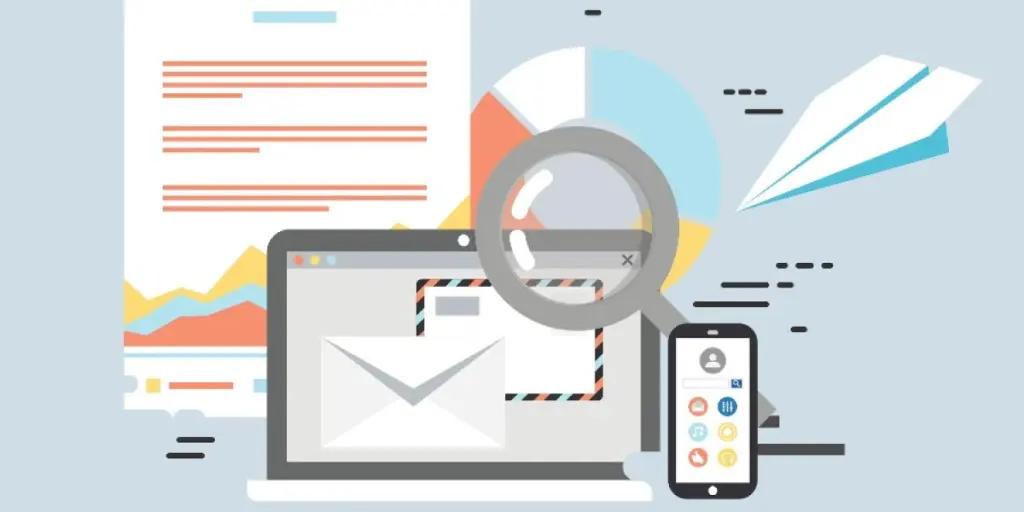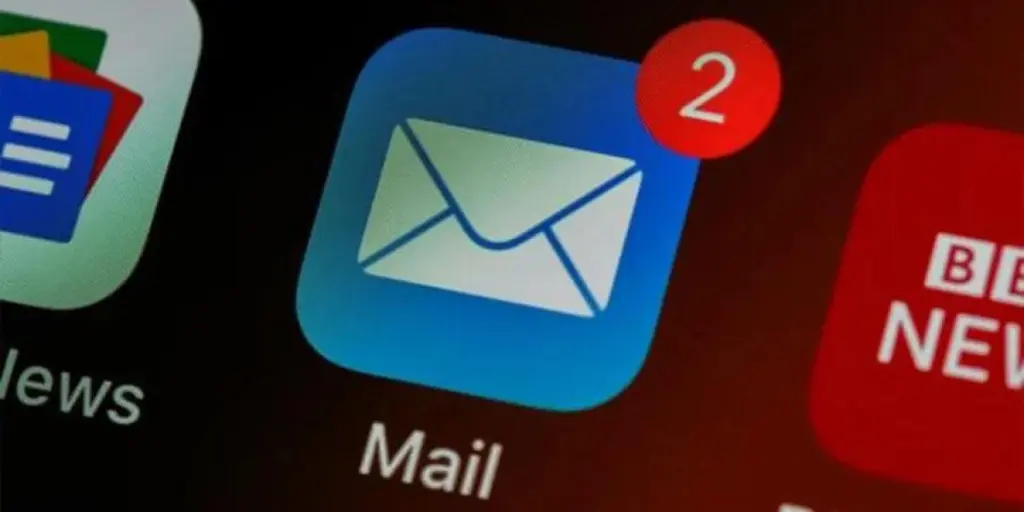Table of Contents
1. Social media marketing
2. Email marketing
3. SEO (Search engine optimization)
4. Pay-per-click (PPC) advertising
5. SMS marketing
6. Influencer marketing
7. Affiliate marketing
8. Sponsorship & partnership marketing
9. Content marketing
10. Referral marketing
11. Virtual event marketing
12. Online public relations (PR)
13. Traditional marketing
Summary
Running a successful business isn’t just about having a great product or service. You’ll need to learn how to market it by effectively reaching your audience through marketing strategies.
Regardless of whether your business is a new startup or an established brand, the right promotional strategy can quickly take you from obscurity to recognition.
There’s no one perfect way to promote your business — it’s about creating a marketing mix that works for you and then testing and refining your strategy as you go.
In this article, we’ll explore 13 proven methods for how to market your business effectively. These digital and traditional marketing techniques are designed to improve brand awareness, engage your customers, and ultimately drive sales.
1. Social media marketing
Social media has given businesses new ways to engage with customers and promote what they sell. There are 5.07 billion people on platforms like:
Social media users can very quickly boost brand visibility and get your target audience talking about you. Here are some tips to help you get started:
- Start by creating fun, unique content related to your products or services that your target audience will want to engage with
- Make sure you know exactly who your target audience is — find out everything about them from their demographics to where they like to spend time online
- Promote your content or create ads to target those individuals on social media
- As people begin to respond to more of your content online, be sure to engage with them to keep those conversations going
Essential things to track when marketing on social media include:
- Follower growth
- Engagement rates (likes, comments, shares)
- Website visitors from social channels
- Sales from social media campaigns
Checking these often and optimizing your strategy based on what works and what doesn’t can help improve your social media presence and get better results.
Nike has achieved tremendous success in its social media marketing campaigns (after all, it’s one of the most recognizable brands in the world). The brand uses athletes’ stories to connect with everyday people. These stories showcase journeys of perseverance, struggle, and triumph — themes that resonate with a broad audience. This approach positions Nike as more than just a brand — it’s also a supporter in achieving goals.
Just like in the post below, you can see what appears to be a personal note from tennis player Jannik Sinner. Though not directed to a specific person, it speaks to the idea of being “number 1” and how it fueled his drive to actually reach that ranking in the World.
Regular product communication has its place in social media, but ultimately, it’s inspirational content like this that people truly relate to.

2. Email marketing
Email marketing remains one of the most effective strategies for engaging with your audience, nurturing leads, and driving sales. Use signup forms to start by collecting emails from people who have shown a genuine interest in your products or services.
As you’re building your list, be sure to segment your subscribers based on factors like purchase history, engagement levels, and demographics, since this allows you to send more personalized content to those people. Here are some other tips to consider:
- Create content that your audience will be interested in
- Encourage them to take action with prominent CTAs
- Make sure your emails are easy to read on a mobile device
- Set up email automation like welcome emails and abandoned cart emails for a smoother customer experience
- Monitor data like open rates and conversions to improve your email marketing
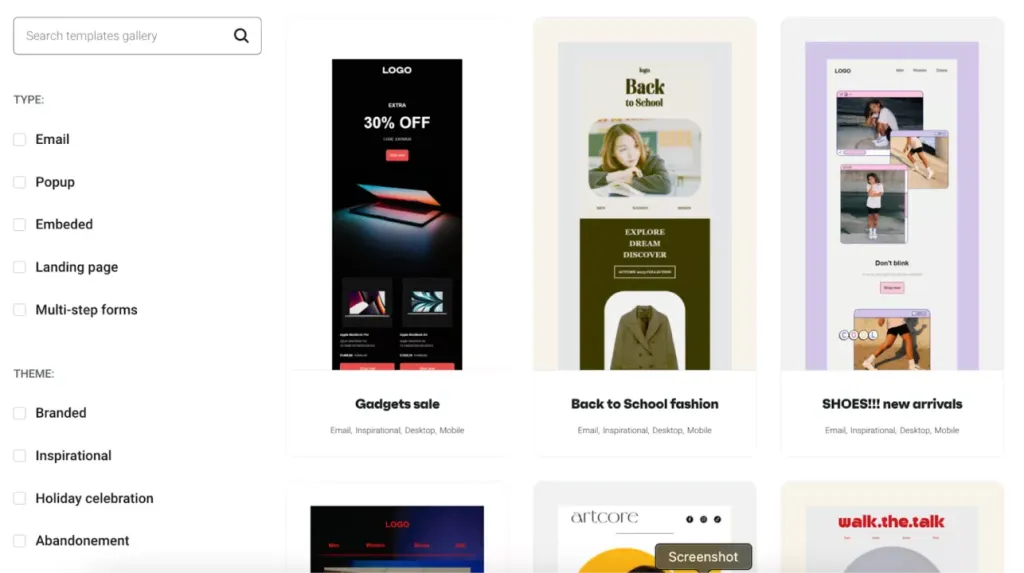
3. SEO (Search engine optimization)
Search engine optimization (SEO) is another important strategy for improving your visibility online. SEO is the practice of improving a website’s ranking in search engines like Google, Bing, or Yahoo. While you won’t see the results of your SEO efforts overnight, it can have a huge impact long term, as it can help you potentially drive an enormous amount of relevant traffic to your website.
Start by identifying and using the keywords that your customers are likely using when searching for your products and services and then use them to create relevant content (blog posts, product descriptions, etc.) your audience will want to read. Do your best to include them naturally in titles, headings, and meta descriptions.
Some other SEO strategies to include:
- Building your website’s authority through backlinks from reputable websites
- Making sure your site has fast load speeds, that the web pages are properly indexed, and that it’s mobile-friendly
- Improving the overall user experience with easy navigation and an intuitive interface
Finally, as with all of your marketing efforts, make sure you’re using tools like Google Analytics and Google Search Console to monitor your site’s performance, track traffic, and make data-driven decisions on where to focus your efforts.
4. Pay-per-click (PPC) advertising
Pay-per-click (PPC) advertising is a powerful digital marketing strategy that allows businesses to drive targeted traffic to their websites by paying for ad placements on search engines and other platforms. To implement PPC advertising effectively, you need to:
- Set clear goals, such as generating leads, boosting brand awareness, or improving sales
- Generate a list of keywords that your customers are searching for and write ad copy for these keywords
- Decide whether you want to create unique landing pages for your PPC ads to go to, or send them directly to your product pages
- Regularly monitor the performance of your PPC campaigns and use analytics tools to track metrics like click-through rate (CTR), conversion rate, and return on ad spend (ROAS)
Use the information you gather from those tools to make incremental changes to your ads and landing pages, noting how each change impacts the ad’s performance. By continually testing and improving your campaigns, you will maximize your advertising investment.
5. SMS marketing
SMS marketing is a great way to reach out to your customers directly with timely and relevant messages. This approach can not only enhance your customer engagement but it can also help drive conversions and create brand loyalty in an increasingly mobile-centric world. Here’s how you start with SMS marketing:
Building your list
Build your SMS list by asking customers to opt in to your list on your website, social media sites, or in your store. Try to divide the list based on purchase history, demographics, or preferences.
Creating your message
As you’re creating messages to send via SMS, make sure they’re short and relevant with clear CTAs. When and how often you send messages are also important considerations.
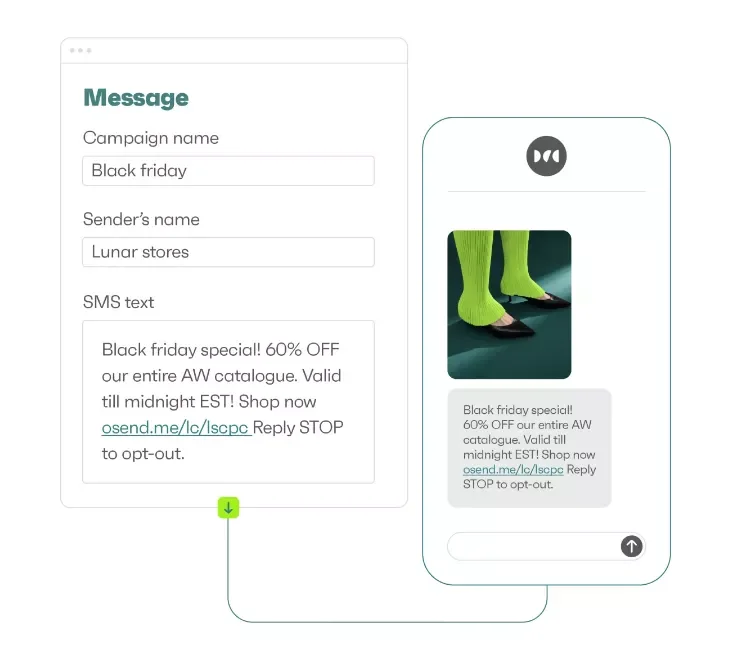
Timing and frequency of your messages
It’s important to find a balance between staying engaged with your customers and avoiding messaging fatigue. Track metrics like engagement and opt-out rates to find the ideal number of messages you should be sending your audience and at what times.
It’s also a good idea to set the expectation for your audience up front with how often they’ll hear from you. For example, on the opt-in form tell them what they’ll receive and when, such as flash sales alerts, new product launches, or seasonal specials.
Understanding regulatory compliance
In the United States, you have to follow the Telephone Consumer Protection Act (TCPA) which requires you to get consent before sending messages as well as provide how consumers can opt-out of the messages. Make sure you check the regulations for your region.
6. Influencer marketing
Influencer marketing allows you to leverage the online audiences of other profiles to promote your business. Working with the right people who have an appropriate audience can have a big impact on your brand’s visibility, reputation, and, ultimately, sales.
Follow these steps to get started with an influencer marketing campaign:
- Clearly define your campaign goals and identify the audience you want to target
- Select influencers based on their engagement, reach, and follower demographics
- Approach the selected influencers with a proposal outlining the terms for your collaboration, expectations for content, and compensation
- Ensure that the chosen influencer uses a disclaimer of your collaboration to maintain transparency
Once you have finalized your agreement and kicked off the campaign, track metrics like reach, engagement, conversions, and ROI to determine its success. Adjust as necessary to improve the results for future collaborations.
7. Affiliate marketing
With affiliate marketing, you compensate people who promote your products or services, paying them a commission for each sale. Follow these steps to start an affiliate marketing program:
- Define the commission structures (what percentage of the sale will go to the affiliate)
- Create compelling promotional materials that your affiliates can use with their audiences
- Select affiliates who have audiences that align with your target market
- Use bonuses and performance-based rewards to encourage them to promote your business
- Track your affiliates’ performances
You can use affiliate tracking software to monitor performance metrics like clicks, conversions, and ROI. To be successful, you’ll need strong communication and support with your affiliates with resources, timely updates, and tracking tools.
8. Sponsorship & partnership marketing
Partnering with other businesses or promoting at events can help get your name out there and attract new customers. By teaming up with brands or opinion leaders who align with your business, you can tap into their established audience and their existing credibility to increase your visibility and reach.
Some example sponsorship and partnership campaigns include:
- Event sponsorship: You can sponsor local community events, festivals, tournaments, or conferences
- Athlete or team sponsorship: You can sponsor a sporting event or a specific athlete
- Joint research or content partnership: You can team up with a complementary business to create white papers, webinars, and other content marketing assets
- Brand-to-brand partnerships: You can team up with a business that shares your target market to create co-branded advertisements
Set specific goals for each sponsorship or partnership campaign you participate in. Track your goals throughout the campaign to help determine if the sponsorship or partnership was a success. Some key metrics you can track to measure ROI are:
- Attendance
- Direct sales via sponsorship/partnership code
- How much of the target audience you have reached
Here are a few tips to help you with your sponsorship and partnership marketing:
- Establish clear objectives for the partnership, whether it’s brand awareness or lead generation, and determine how you will track its effectiveness
- Choose partners whose audience aligns with your target market along with your brand fit and whether you have shared values
- Clearly outline the terms, expectations, and measurable goals
- Emphasize the mutual benefits of the partnership, as both parties should gain value and achieve their goals
- Analyze your results, find insights on what tactics worked and implement them in future collaborations
Red Bull’s of sports events is a great example of successful sponsorship marketing. The brand has become synonymous with extreme activities.
By associating itself with high-risk, high-reward sports like snowboarding, skateboarding, and BMX, Red Bull creates a brand image that’s energetic, daring, and exciting. This directly reflects the feeling it wants consumers to associate with the Red Bull drink.
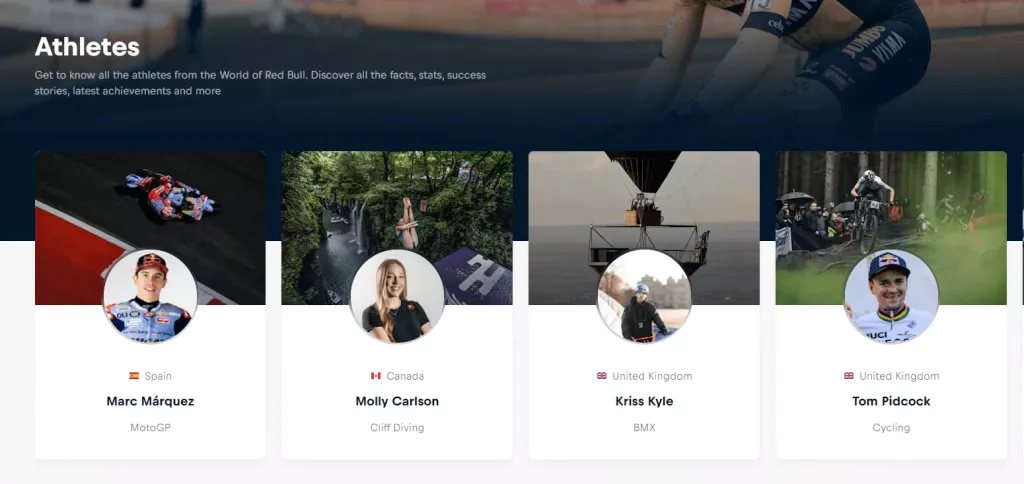
9. Content marketing
Content marketing involves creating valuable, relevant, and consistent content to attract a specific audience. Done well, you can draw people in, nurture the relationship, and turn them into loyal customers.
A well-designed content marketing strategy can also serve to position you as a thought leader within your niche. A few content types that you can use as part of your content marketing strategy include:
- Blog posts
- Videos
- Infographics
- Podcasts
- Ebooks
Different types of content resonate with different audiences, so it’s important to understand what your target audience likes to consume online the most. Incorporate relevant keywords and optimize the content for SEO to improve its visibility in the search engines. You can also use social media networks to amplify your content’s reach.
Metrics like website traffic, social media interaction, lead generation, and conversion rates let you see how well content marketing is working.
10. Referral marketing
Referral marketing is a powerful marketing strategy that uses customer recommendations to bring in new business. Referral marketing taps into the trust existing customers already have with their friends and family, which is why referral leads tend to have high conversion rates.
Here are a few tips for your referral marketing campaigns:
- Provide simple tools for your customers to refer to friends and family via email, social media, or referral links
- Promote your loyalty program to maximize its visibility and increase participation
- Make sure you’re continually monitoring your conversion rates and ROI and looking for ways to make improvements to get better results
You can extend your audience beyond traditional marketing efforts by incentivizing current customers to promote your brand. It also can have a big impact by reducing your customer acquisition costs while boosting brand loyalty through positive word-of-mouth, driving sustained growth.
11. Virtual event marketing
Online events are a great way to connect with your customers, no matter where they are in the world. This type of event marketing is typically more affordable than in-person events and the flexibility and accessibility of virtual events give you access to a broader audience. They can take various forms, including:
- Webinars
- Online conferences
- Virtual product launches
- Interactive workshops
These events provide opportunities for direct engagement with your audience, showcasing your expertise and products in a dynamic, interactive format.
Careful planning is essential. You’ll need to create promotional campaigns across various marketing channels to boost signups and attendance. During the event itself, try to engage attendees through interactive elements, live Q&A sessions, and immersive experiences.
Here are a few other tips to consider:
- Use social media and targeted email campaigns to reach potential attendees directly
- Invite interesting guests who could share their expertise on the topic
- Consider collaborating with industry influencers to endorse the event
- Create urgency by offering discounts for early bird registration
Measuring success through participation metrics and post-event feedback allows you to continuously improve each virtual event. You can analyze attendee engagement, session popularity, and follow-up actions. With this information, you can refine your approach and maximize the impact of future events.

12. Online public relations (PR)
Online PR offers businesses increased brand visibility globally through digital channels and helps build trust by effectively managing your online reputation. There are a number of different strategies you could take as part of your total marketing strategy:
- Publish high-quality content to your site to establish authority
- Share content on social media networks and respond quickly to inquiries
- Manage your reputation online and address both positive and negative mentions of your brand
One of the most popular strategies is online reputation management. You’ll start by monitoring online mentions and reviews to quickly address issues and maintain a positive brand image. You may also want to consider building backlinks from reputable sites to enhance the credibility of your own site while improving your website’s domain authority.
Regardless of what strategy you choose, it’s important to use analytics tools to track any online PR campaigns, monitor the internet for online mentions, and assess audience sentiment about your brand.
13. Traditional marketing
Traditional marketing techniques like print, TV, and radio are still effective in reaching large audiences and building brand recognition. Print ads offer tangible visibility, while television and radio ads can effectively engage both listeners and viewers.
The medium that works best for you will ultimately depend on your audience and its demographics. For example, you likely won’t reach many young people with an advertisement in a newspaper, but you could see immediate results with a television ad placed on a streaming service.
While traditional marketing strategies can be costly and sometimes challenging to measure in terms of ROI, they can be extremely effective when integrated strategically with digital approaches. This integrated approach not only maximizes audience reach but also boosts brand visibility and engagement across multiple touchpoints, resulting in a more cohesive and impactful marketing campaign.
Summary
Finding the right marketing strategy is key to reaching your target audience and growing your business. Regardless of which you choose, it’s always important to start by establishing clear goals, monitoring and tracking the campaign’s progress, and using data from analytics to test and improve.
When you integrate these strategies, you can enhance visibility, engage with your audience effectively, and drive sales growth in a competitive market.
Source from Omnisend
Disclaimer: The information set forth above is provided by omnisend.com independently of Alibaba.com. Alibaba.com makes no representation and warranties as to the quality and reliability of the seller and products.

